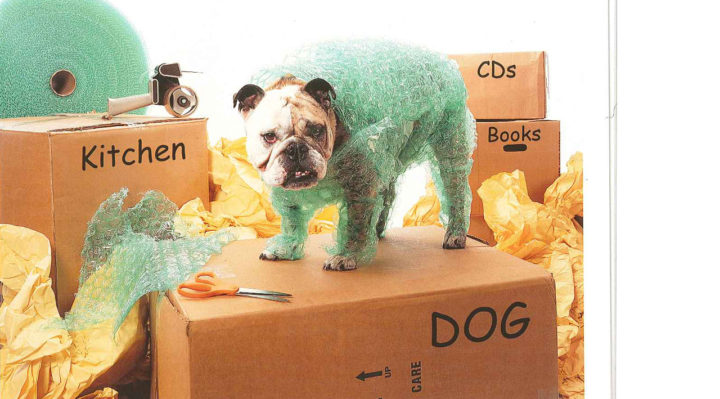
 If you and your pet are getting ready to move, follow these recommendations to keep your companion safe before, during, and after your move.
If you and your pet are getting ready to move, follow these recommendations to keep your companion safe before, during, and after your move.
Plan Ahead
Advance planning will make your move less stressful on you and your pet.
- When you select a new home, keep your pet and their needs in mind.
- Pack over a period of time, and try to maintain your pet’s normal routine.
- Check out dog parks on your travel route.
- Find a pet friendly hotel through AAA or online.
- Contact the airline you are traveling on. Many limit the size of the dog crate they will carry.
- Look up emergency clinics on your travel route.
- Bring a travel kit with your pet that includes food, water, waste bags, treats, and toys.
- Invest in a high-quality, sturdy pet carrier.
- If you have a dog or cat whom you want to keep safely confined on moving day, get a carrier ahead of time and gradually accustom your pet to spending time in it.
- Make sure your animal’s microchip information is up-to-date. Call the chip manufacturer, such as AVID, to give them the information. Also keep a photo for your pet handy for identification.
- If your pet doesn’t enjoy car rides, consult your veterinarian about medication.
Never leave pets alone in a parked vehicle!
Packing Your Home
On moving day, place your pet (whether in the carrier or not) in a safe, quiet place, such as the bathroom, so that they cannot escape. Place a large sign on the door that says DO NOT ENTER and be sure that friends and professional movers are aware that the room is off-limits.
Prepare Your New Home
Take with you all the familiar and necessary things your pet will need from day one in your new home: food, water, medications, bed, litter box, food and water bowls, and health records. Make your new home safe for all pets by being mindful of, or providing a secure place for, hazards that can harm them including poison such as cleansers, insect sprays and pesticides, medications, chocolate, certain plants, and antifreeze.
Settling Into Your New Home
Moving to a new home may be stressful to your pet. Be patient and understanding and provide lots of affection. Here are some pointers to help you settle in safely and sanely.
Cats – For the first few days in your new home, it’s smart to confine your cat to one room while you work on putting the rest of the place in order. Prepare the room with your cat’s bed, litter box, food and water bowls, and toys.
Dogs – Ideally your dog’s introduction to his new home will be with familiar furniture already in place, including his bed and crate, toys, and food and water bowls. If you must be away from home for many hours each day, look into a pet-sitter or consider dog day care.
Veterinary Care
As soon as possible, choose a veterinarian and take a practice drive to the nearst emergency veterinary clinic. Trying to find it when you really need it can waste precious time.
SOURCE – SCRAPS release, 2017



